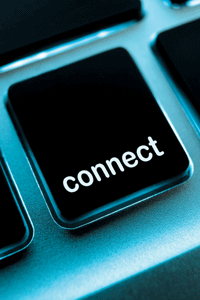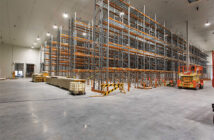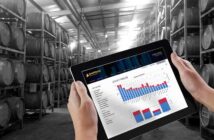By Gary Hartley GS1 New Zealand
The Internet of Things was a phrase coined a number of years ago by the acclaimed grandfather of Radio Frequency Identification (RFID), Dr Sanjay Sarma of M.I.T fame.
At a time when the RFID hype curve was probably at its peak (late 1990s) the Internet of Things was a vision that promised ubiquitous connectivity through the Internet, or localised aspects of it and RFID technologies that would enable objects to be identified and monitored remotely from more or less everywhere at any time.
It was based on the idea that more and more ‘things’ – buildings, machines, animals, consumer items or whatever – will be connected digitally and that information about them (and relationships between them) will be accessible by organisations and people from an increasing array of vantage points.
The IoT was touted as the next big concept in digital communications – and potentially, in every aspect of the modern economy! It is a huge concept and an enticing vision – but for the most part, it has remained just that. If many objects in a particular environment are RFID tagged and capable of being monitored and tracked by people using smart phones or other reader devices in or beyond that environment, then we move into the IoT vision.
Visionaries are basically futurists. They see things as they could be, albeit recognising that timing is often difficult to pinpoint. While the IoT was conceived of in the late 1990s it is only coming about now with the development of RFID as a standardised, robust, commercially viable and increasingly-adopted technology. In my view, Ultra High Frequency (UHF) RFID is making RFID adoption and implementation far more attractive and affordable. At the same time, tagging has moved beyond assets and inventories and on to individual objects made possible by ever decreasing prices and ever improving higher performance. Nobody really knows yet what the IoT will look like in full reality, but there’s a clearer picture emerging now.
Standards like the Electronic Product Code (EPC) suite of UHF Standards are helping drive RFID adoption– and also the IoT. EPC Standards matter in the IoT scheme of things because of the way they enable the serialisation of objects (to an instance level), while EPC IS (information service) enables the sharing of such data across the Internet within entities and among trading partners.
The usual outlook for IoT development in any modern economy goes like this:
Companies increasingly build RFID into their infrastructure, much as Wi Fi has been built in today, with more and more objects being tagged and tracked through production and trading processes. Tagging and tracking of objects become ubiquitous within and beyond the firm and anyone needing to know can see what objects – machines, raw materials, finished products or whatever – are available, where and in what state.
In New Zealand, it isn’t hard to see the IoT emerging first in our largest industry – agri-business. July this year will bring the mandatory RFID tagging of all individual cattle with other livestock species to follow. However, the (National Animal Identification) NAIT livestock traceability system designed for New Zealand is not based of the global EPC standards, so its ability to integrate seamlessly with the IoT is limited.
For this reason, a NAIT sanctioned research project will continue this year which aims to identify a migration pathway for a potential move to UHF RFID in the future, thereby providing for the promise of the IoT. As well as enabling better integration up and down the red meat supply chain, there is increasing acceptance globally that UHF RFID could also enable additional value by adding on-farm activities and processes, which the current Low Frequency (LF) RFID standards cannot.
Grant money recently approved from the Sustainable Farming Fund will help the project group, made up of the Deer Industry Association, The New Zealand RFID Pathfinder Group and ANZCO Foods (and supported by international interests) work towards achieving an IoT for livestock in New Zealand – believed to be a world first!
We wouldn’t normally think of farms, meat processing facilities and retail outlets as being parts of the Internet of Things for New Zealand food products but they surely become so as the internet and RFID technologies evolve and are more widely adopted?





























































































